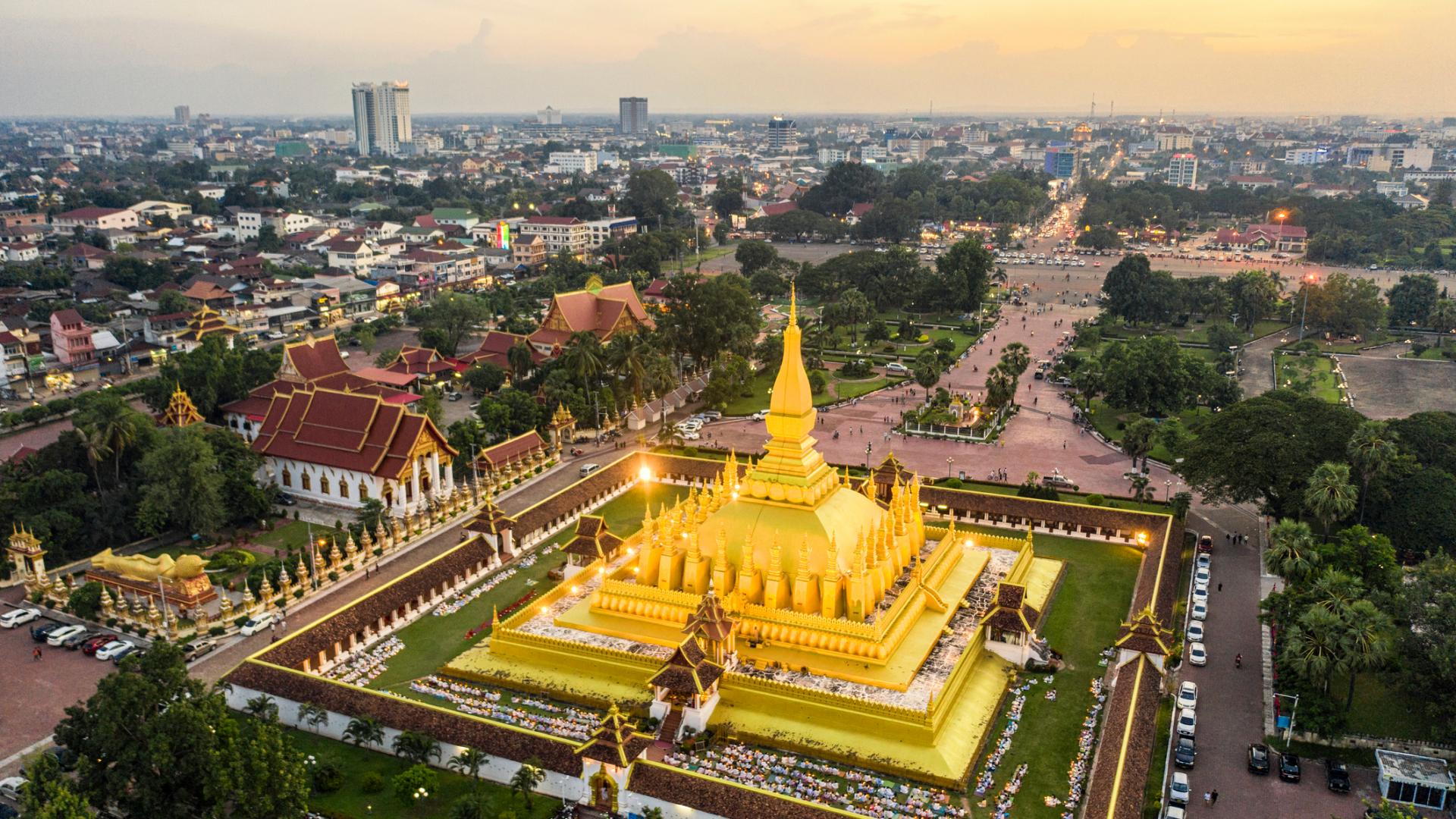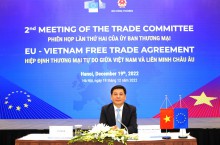The News
Characteristics and market development trends for some typical products in Laos
Laos' economy is heavily dependent on capital-intensive natural resource exports. The economy has benefited from high foreign direct investment in hydropower dams along the Mekong River, copper and gold mining, logging and construction, although some projects in these industries have been criticized for their impact on the environment.
Laos' economy is heavily dependent on capital-intensive natural resource exports. The economy has benefited from high foreign direct investment in hydropower dams along the Mekong River, copper and gold mining, logging and construction, although some projects in these industries have been criticized for their impact on the environment.
- Lao market characteristics
Laos’s economic growth rate averaged more than 6% per year between 1988 and 2008, and Laos' growth has recently been one of the fastest in Asia, averaging more than 7% per year over the past decade.
However, Laos remains a country with underdeveloped infrastructure, especially in rural areas. The road system is currently at a basic level, but is improving, and there are telecommunication limitations in internal and external lines. Electricity is available to 83% of the population. Agriculture, mainly rice cultivation in the lowlands, accounts for about 20% of GDP and 73% of total employment. Recently, the country has faced persistent current account deficits, declining foreign currency reserves and growing public debt.
Laos' economy is heavily dependent on capital-intensive natural resource exports. The economy has benefited from high foreign direct investment in hydropower dams along the Mekong River, copper and gold mining, logging and construction, although some projects in these industries have been criticized for their impact on the environment.
Customs procedures are improving throughout, but some reforms remain unclear. The speed of customs clearance has improved in recent years through streamlining the process according to methods such as the use of electronic systems - SMART-Tax and e-mainfest - to strengthen customs management and inspection for import and export goods.

2. Bilateral trade relations between Vietnam and Laos
In the 10 months of 2022, the total import and export turnover of Vietnam and Laos reached 1.4 billion USD, up 28.2% over the same period in 2021. Estimated at 11 months of 2022, the total import and export turnover of Vietnam and Laos reached 1.5 billion USD, up 25.9% over the same period in 2021.
Export
Vietnam's exports to Laos in 10 months of 2022 reached 512.3 million USD, up 3.7% over the same period in 2021. In particular, some main commodity groups have the following turnover: petroleum of all kinds reached 58.1 million USD, up 246.9%; iron and steel products reached 35.1 million USD, down 43.9%; iron and steel of all kinds reached 53.7 million USD, down 8%; transport vehicles and spare parts reached 31.7 million USD, down 19.5%; machinery, equipment, tools and other spare parts reached 52.1 million USD, up 4.5%; fertilizers of all kinds reached 29 million USD, up 55.5%; plastic products reached 14.2 million USD, down 6.9%; vegetables and fruits reached 51.6 million USD, up 260.6%; ...
It is estimated that in 11 months of 2022, Vietnam's exports to Laos will reach 569.2 million USD, up 5.2% over the same period in 2021. The increase will be in some main commodity groups such as: petroleum of all kinds are estimated at 64.9 million USD, up 215.4%; iron and steel products are estimated at 38.8 million USD, down 43.8%; iron and steel of all kinds are estimated at 58.4 million USD, down 8.3%; transport vehicles and spare parts are estimated at 31.7 million USD, down 23.8%; machinery, equipment, tools and other spare parts are estimated at 58.1 million USD, up 6.8%; fertilizers of all kinds are estimated at 31.2 million USD, up 50.1%; plastic products were estimated at 16.2 million USD, down 9.4%.
Imports
Vietnam's imports from Laos in the 10 months of 2022 reached 849.5 million USD, up 49.5% over the same period in 2021. The main items in Vietnam's imports from Laos include: rubber reached 193.4 million USD, up 49%; wood and wood products reached 116.6 million USD, up 47.7%; fertilizers of all kinds reached 79.9 million USD, up 113.7%; vegetables and fruits reached 5.2 million USD, down 44.8%; ore and other minerals reached 71.9 million USD, up 4.3%.
It is estimated that in 11 months of 2022, Vietnam's imports from Laos will reach 949.7 million USD, up 42.6% over the same period in 2021. Some imported goods such as rubber is estimated at 220.7 million USD, up 41.1%; wood and wood products are estimated at 120.4 million USD, up 26.5%; fertilizers of all kinds are estimated at 89.3 million USD, up 83.4%; vegetables and fruits are estimated at 5.7 million USD, down 58.9%; ores and other minerals are estimated at 76.9 million USD, down 1.1%.
3. Development trend of Laos market
Disposable incomes are rising, especially as elites have access to resource-based industries, the middle class is expanding slowly. This means that the consumer and service sectors in Laos are likely to continue to grow in the future. For example, new Thai-funded private hospitals are being built in Vientiane, car sales are growing rapidly, Laos' first 5-star hotel opened in 2017, and Lao youth are going abroad more and more for opportunities to expand their knowledge.
The government is committed to becoming an important "road link" between China and ASEAN (bordering China, Thailand, Vietnam, Cambodia and Burma) as well as the "battery of Southeast Asia" by harnessing hydropower and for a smaller region to expand wind energy sources, solar and thermal energy to export electricity throughout the region. Laos' electricity sector is open to foreign investment, represented by many international companies. Hydropower and transmission and distribution infrastructure will be the focus of increased investment by the Lao government as the country develops its electricity industry, with huge opportunities to develop solar power.
Despite a gradual decline in its contribution to GDP in recent years, Lao’s agricultural sector still shows promise and is a priority of Lao’s government as part of the government's green growth development concept. The land has not been utilized. Laos' low population density, large markets for agricultural commodities and livestock in neighboring markets have provided opportunities for investors to learn about agricultural opportunities, including animal husbandry, building dairy plants and investing in agricultural enterprises. Opportunities for the export of modern harvested, planted, processed products and other technologies will help the agricultural sector develop.
International companies are developing special economic zones in the provinces of Vientiane, Savannakhet and Champasak and a number of others. Special economic zones offer a range of incentives and tax exemptions to investors depending on the industry, and the Lao government is constantly striving to improve the business environment. International investors have been attracted by the abundance of cheap electricity, low labor costs, Laos' central location in the Greater Mekong Subregion, and the improvement of transport infrastructure.
The Lao government has targeted tourism, especially ecotourism, as a key area of growth in the future. Laos is trying to attract more high-class tourists to its market by liberalizing aviation policies, making incoming and outgoing flights more frequent and less expensive.
The Lao government fully liberalized the retail sector in 2015, allowing foreign retail establishments to enter the country.
The level of infrastructure development in Laos is low but is improving rapidly.
Minerals and the mining sector are the main drivers of growth in Laos, especially copper and gold. Other mineral resources include bauxite and potassium.



